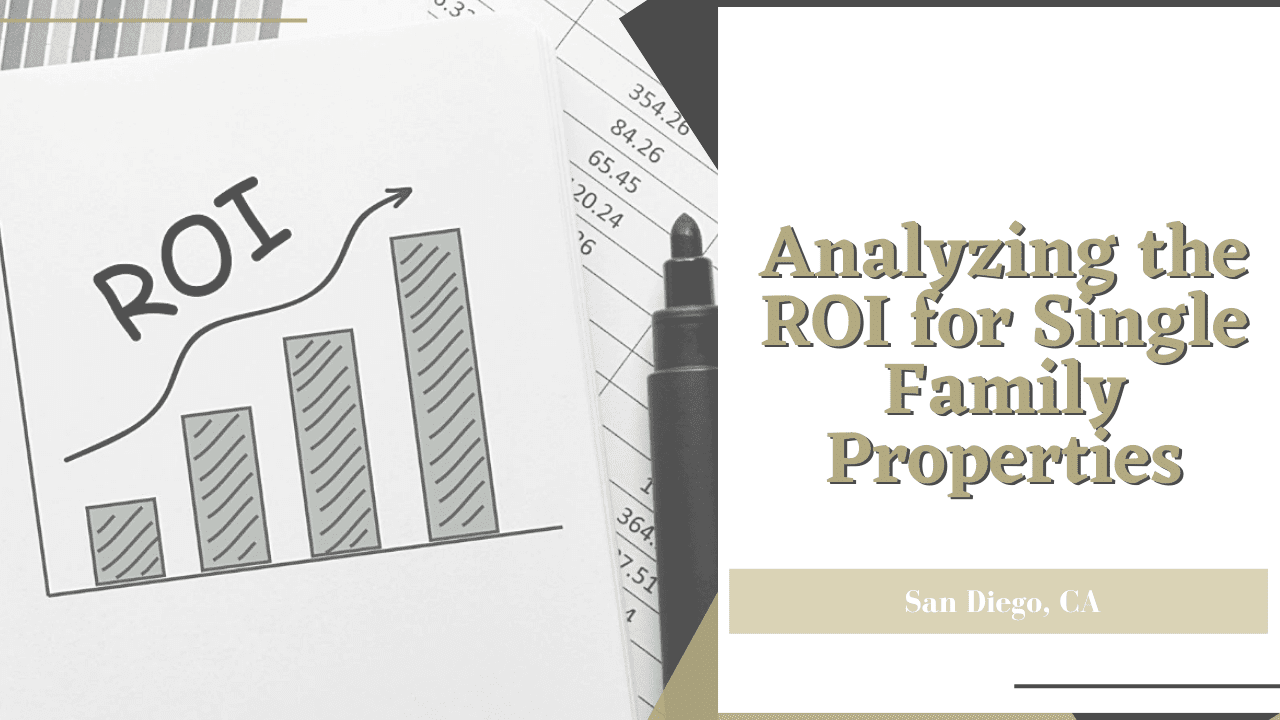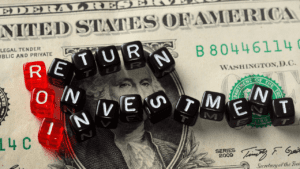San Diego Residential

As an investor with single-family rental properties in San Diego, your most obvious goal is to earn money on the homes you rent out. While it’s easy to see the rent that is coming in, how can an owner really be sure that the return on that investment, or ROI, is where it should be?
Perhaps you have been asking that question. If so, we have some answers for you, based on our experience as San Diego property managers.
Calculating and Analyzing ROI in San Diego
Measuring ROI is an essential part of any investment strategy because it demonstrates the amount of money that’s being earned on a rental home. It helps investors make wise and well-informed decisions about their current investment position and any future goals that need to be set.
Calculating ROI first requires an analysis of how the investment home was purchased. For buyers who paid in cash, the math is fairly simple. Take a look at net profit or gains that are made on the investment, divide it by the original property cost, and there’s the return that’s being earned.
For investors who have mortgages, the same formula is followed. The main difference is that there must also be space to factor in the down payment and the monthly mortgage payment.
Calculating Expenses Against Income
Many of the fixed expenses property owners face are easy to analyze when calculating ROI. The cost of a mortgage, for example, and the homeowner association fees, taxes and insurance that must be paid are fixed. They will not change much from year to year.
There are variables, however, and that’s where it can become complicated to really understand a property’s investment returns. Maintenance is the largest variable, and can make the ROI calculations complex, especially on single-family homes which are typically more expensive to maintain than multi-family properties.
The cost of emergency repairs, routine maintenance, and preventative inspections will add up quickly, and they will not be the same from year to year or month to month. These must be deducted from the gains and profits that are earned. Investors need to remember that these costs may look like losses on paper, but preserving the condition of an asset and increasing its value will contribute to higher ROI.
Why Does Understanding ROI Matter?
 Understanding ROI helps with better investment decisions. Before investing in a single-family home, estimate all costs against all earnings. The numbers will often help investors choose one property over another.
Understanding ROI helps with better investment decisions. Before investing in a single-family home, estimate all costs against all earnings. The numbers will often help investors choose one property over another.
Smart investors look for opportunities where earnings exceed expenses, creating better ROI. Losing money on an investment often comes down to expenses that are too high or completely unpredictable.
Financing plays a major role in the way investors earn income on their rental properties. With less money down, there’s a higher mortgage payment and yet the ROI is typically better. That’s due to the higher expenses that come with a large cash deposit or down payment early in the investment period.
Hopefully, this high-level look at how to analyze the return on investment with a single-family property has provided some assistance and direction. We would be happy to analyze your specific investment property or portfolio, so contact us at San Diego Residential Property Management for detailed and customized information when you’re ready.

